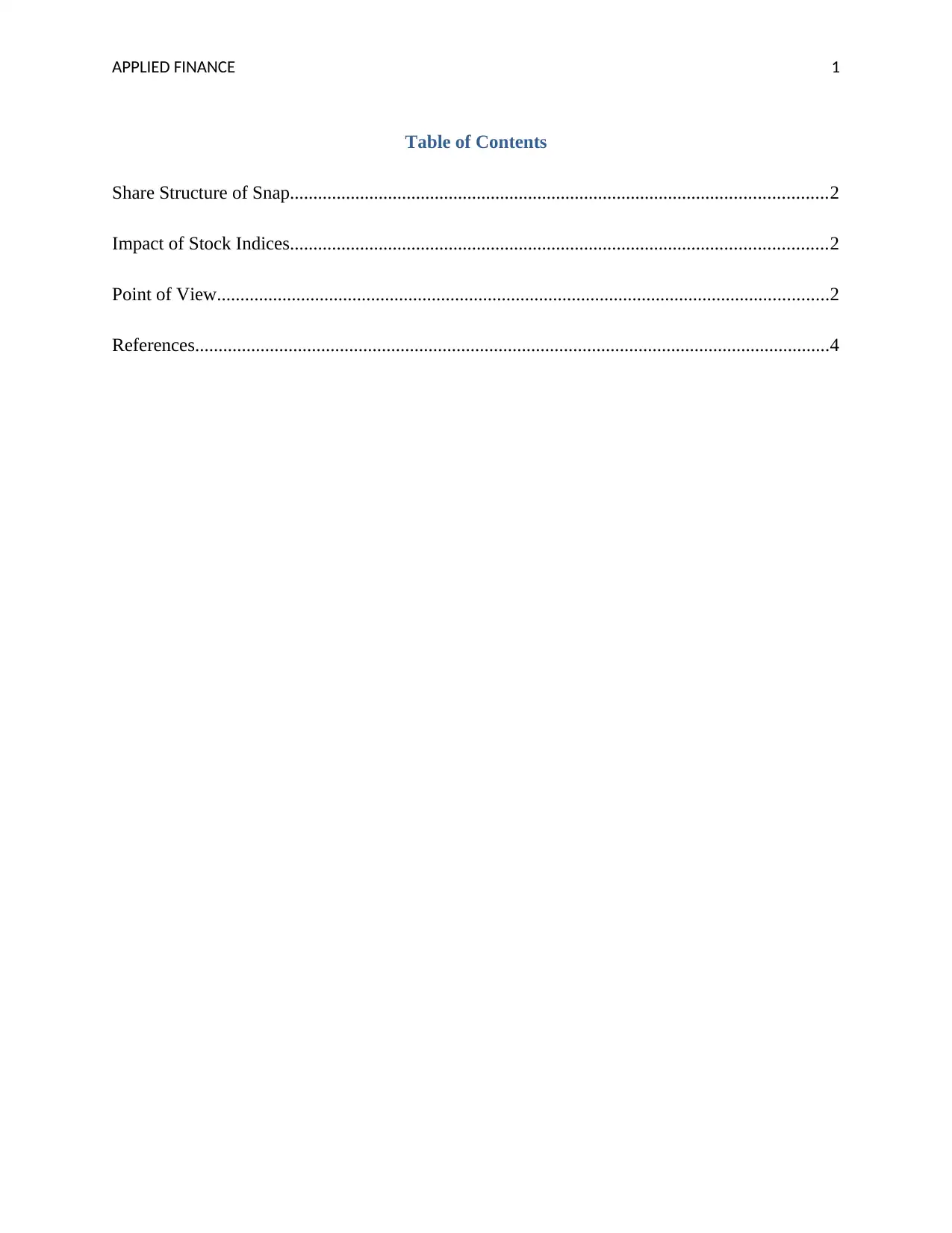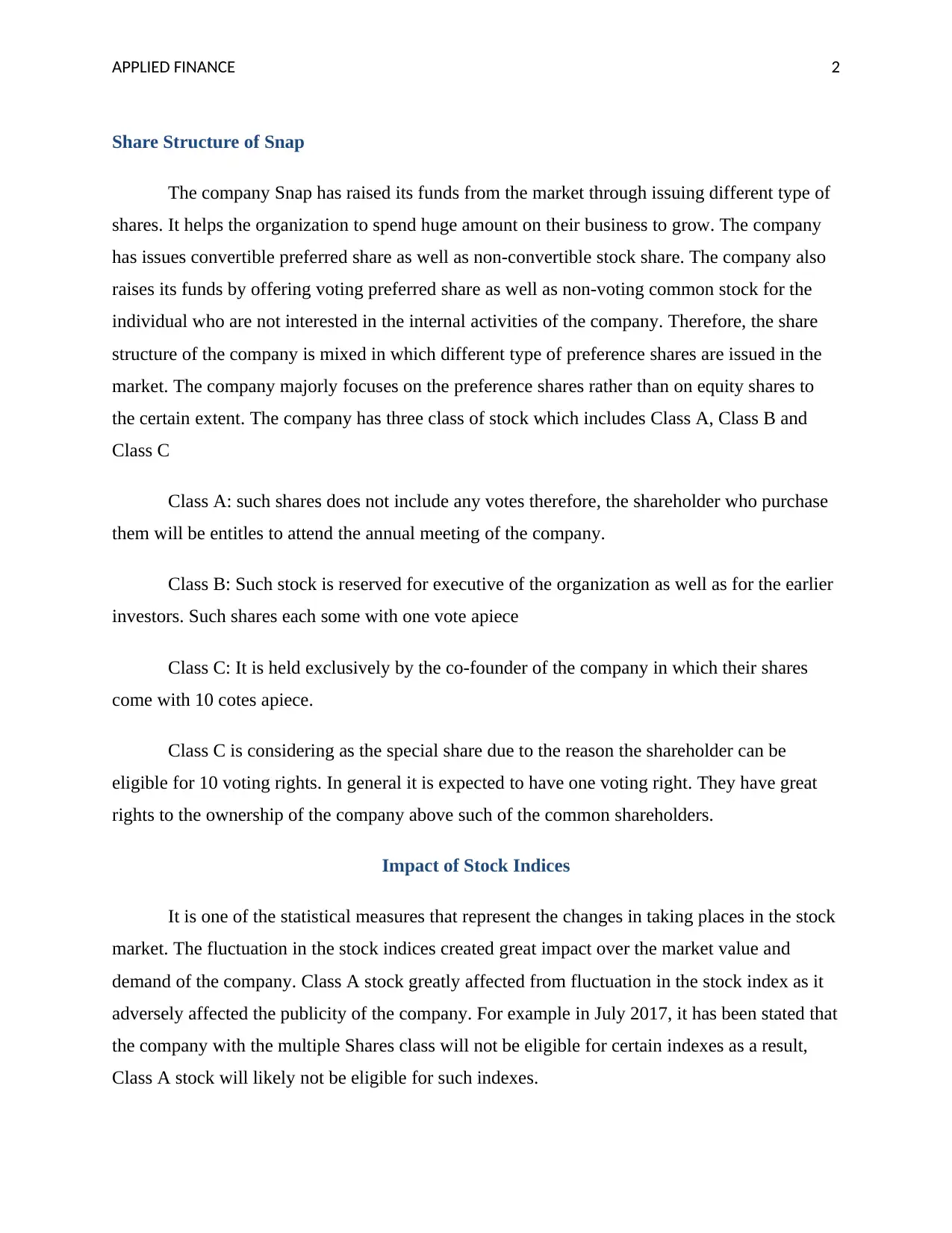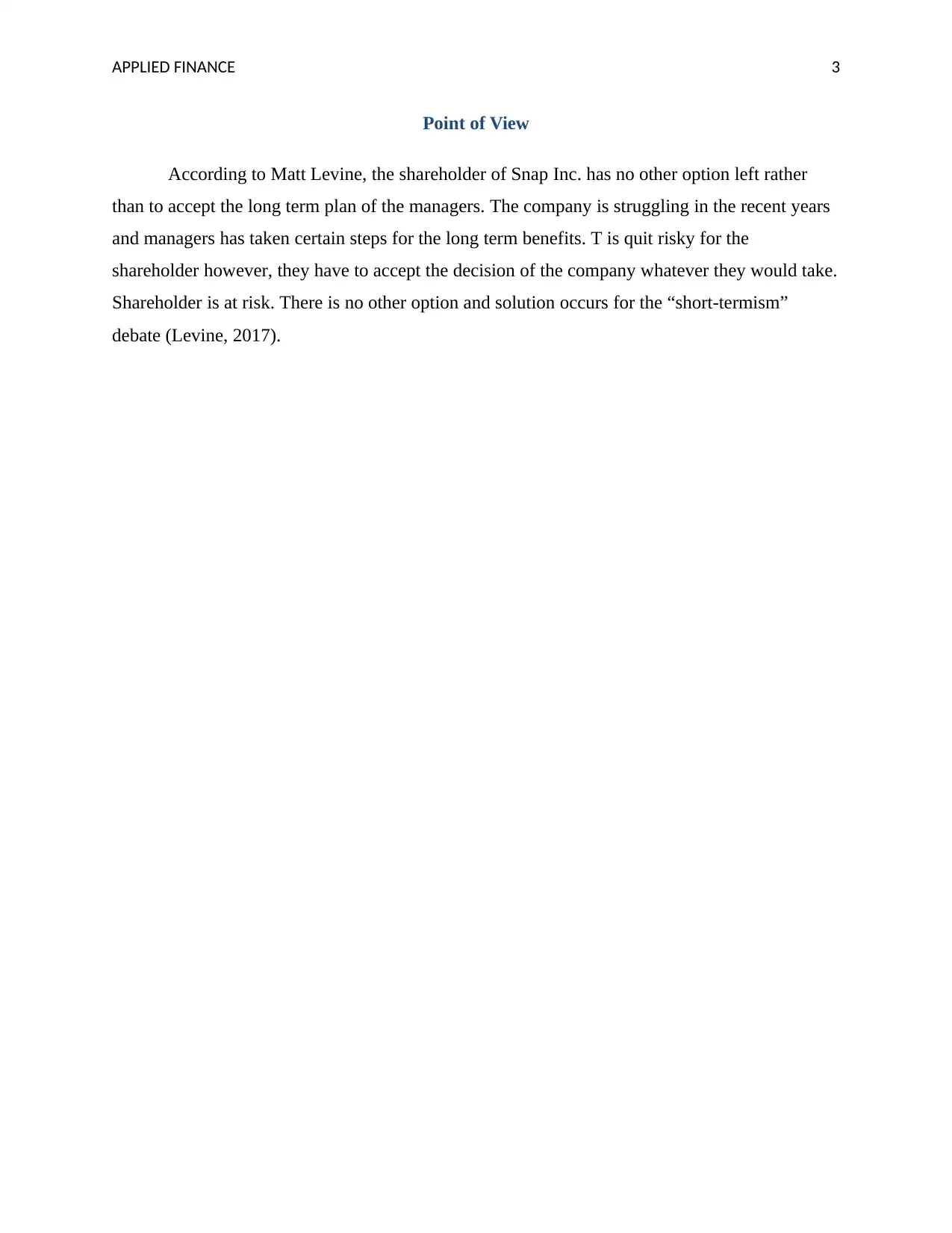Applied Finance: Snap Inc. Share Structure, Stock Indices, and POV
VerifiedAdded on 2022/09/28
|5
|535
|20
Report
AI Summary
This report analyzes the share structure of Snap Inc., detailing the different classes of shares (A, B, and C) and their associated voting rights. It examines how the company has raised funds through various share types, including convertible preferred and non-convertible shares. The report further explores the impact of stock indices on Snap's stock, particularly Class A shares, and how fluctuations in the market affect the company's value and publicity. Additionally, it presents a point of view from Matt Levine regarding shareholder options and the challenges faced by the company, emphasizing the risks and long-term plans. The analysis draws upon the Q3 2017 Earnings Report, providing insights into the company's financial structure and market dynamics.
1 out of 5











![[object Object]](/_next/static/media/star-bottom.7253800d.svg)